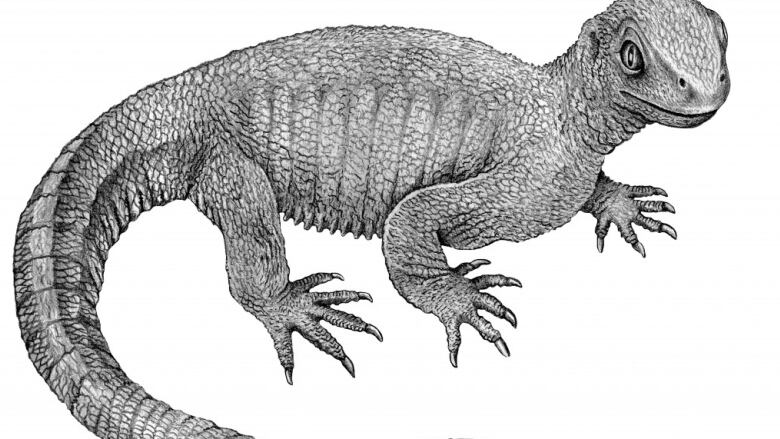Pappochelys was 'grandfather' of all turtles
Pappochelys means 'grandfather turtle' and represents a missing link

It looked like an odd lizard with a bulky body and only the skeletal precursor of a shell, but scientists say 240 million-year-old fossils unearthed in a quarry in southern Germany represent the grandfather of all turtles.
The scientists on Wednesday announced the discovery of the oldest-known turtle, a 20-centimetreTriassic Period reptile combining traits of its lizard-like ancestors with a set of emerging turtle-like features.
- Read the paper in Nature
- Listen to an interview with Hans-Dieter Sues this Saturday, June 27, onCBC'sQuirks & Quarks
They named it Pappochelys, meaning "grandfather turtle," owing to its position at the base of the turtle family tree.
"Pappochelys indeed forms a missing link for two reasons. It is far older than all so far known turtles. And its anatomy is more primitive in many features, showing the ancestral condition of various body regions," said paleontologist Rainer Schoch of Germany's State Museum of Natural History Stuttgart.

'Transitional' creature
It is 20 million years older than the previous earliest-known turtle, Odontochelys from China. While Odontochelys boasted a rudimentary shell on its back, Pappochelys bore only the beginnings of this characteristic turtle trait that evolved in many steps over tens of millions of years.

Pappochelys, known from 18 fossil skeletons, had a long tail, broad trunk, and, rather than a beak as in later turtles, a lizard-like skull with numerous peg-like teeth suitable for eating insects and small lizards.
It resided alongside a freshwater lake and may have used its tail for swimming and legs for steering in the water.
Schoch said Pappochelys, as a transitional creature between lizard-like ancestors and later turtles, provides a much clearer picture of turtle evolution.
"Transitional creatures are the most important contribution that paleontology can make to the study of evolution. They are often unexpected and show surprising features," Schoch said. "They show how complicated structures like the skull or turtle shell formed step by step, and also give evidence on the sequence of evolutionary steps."
Pappochelys lived 10 million years before the first dinosaurs, but plenty of danger existed. The lake's largest predator was the five-metre amphibian Mastodonsaurus. The six-metreterrestrial croc relative Batrachotomus prowled the land.
The research appears in the journal Nature.












_(720p).jpg)


 OFFICIAL HD MUSIC VIDEO.jpg)
.jpg)



























































































